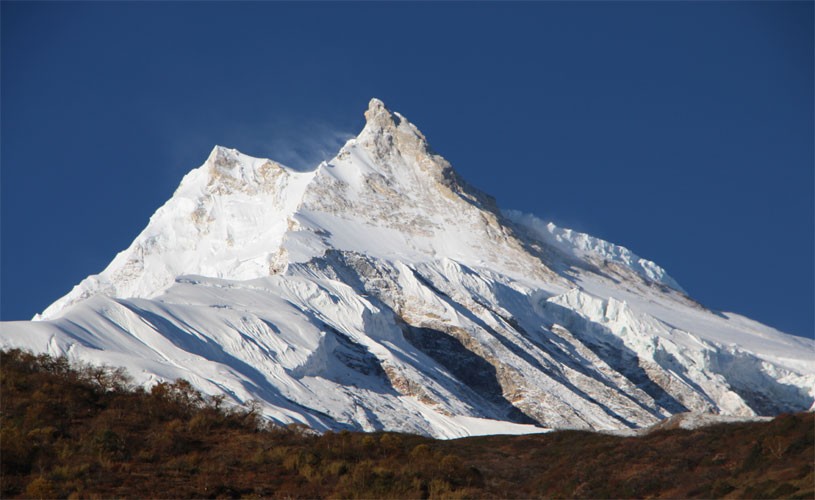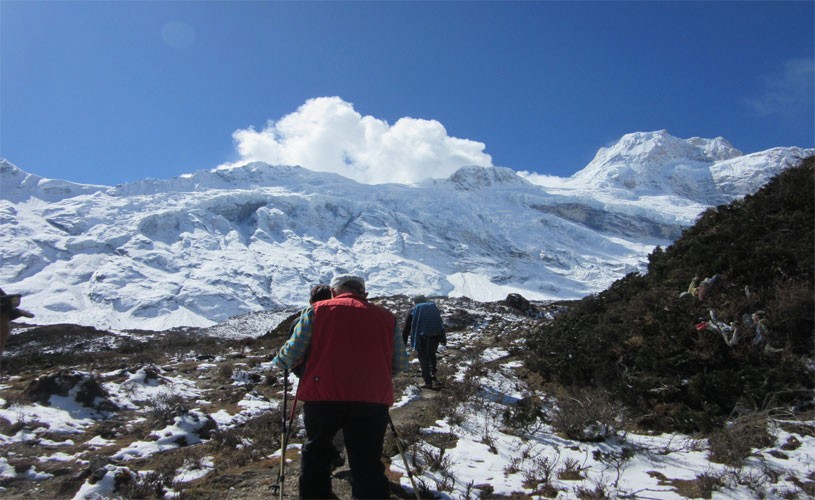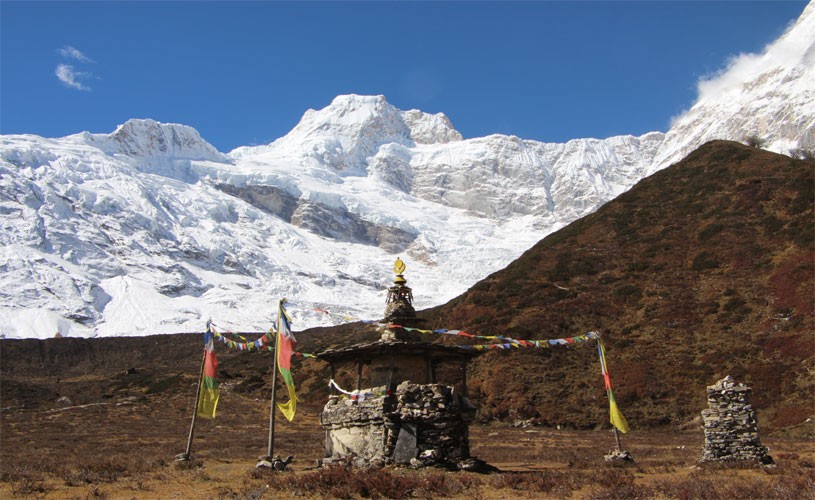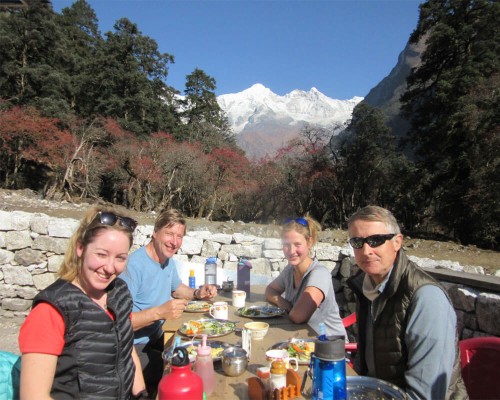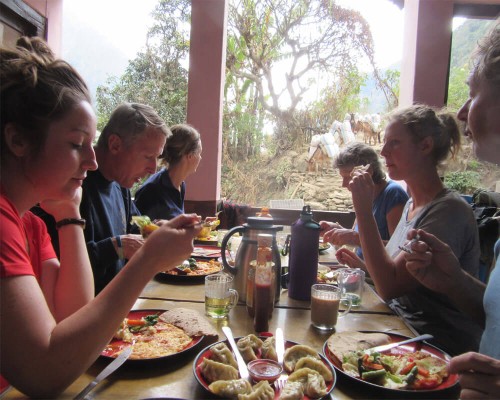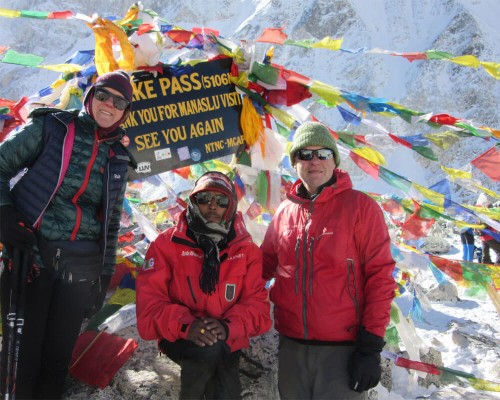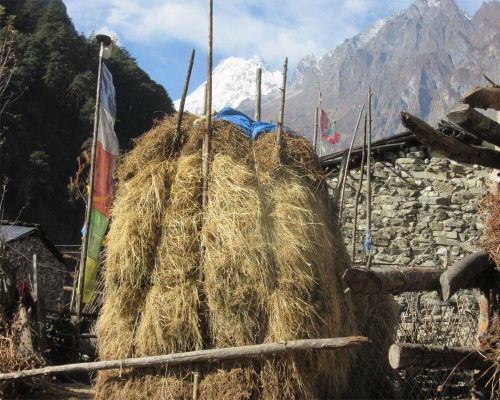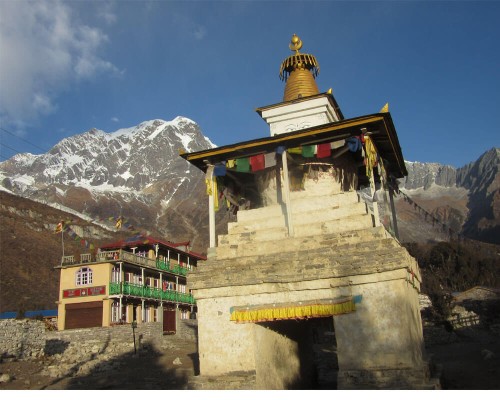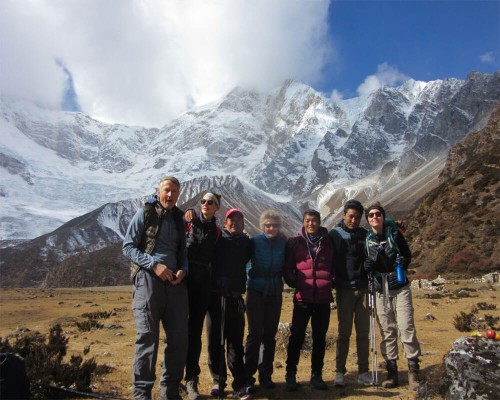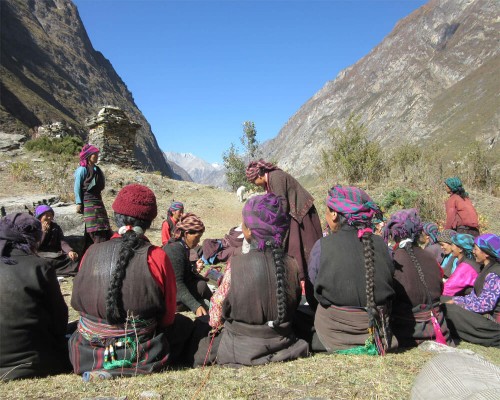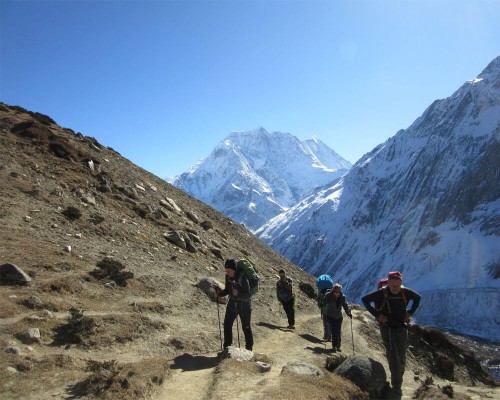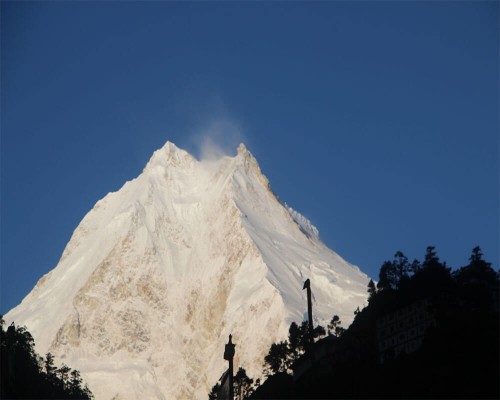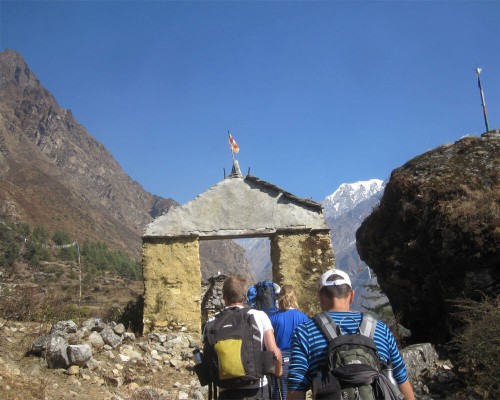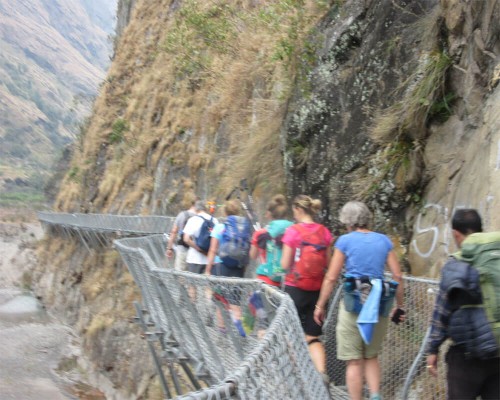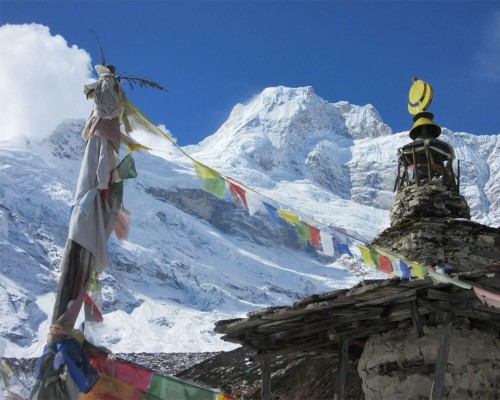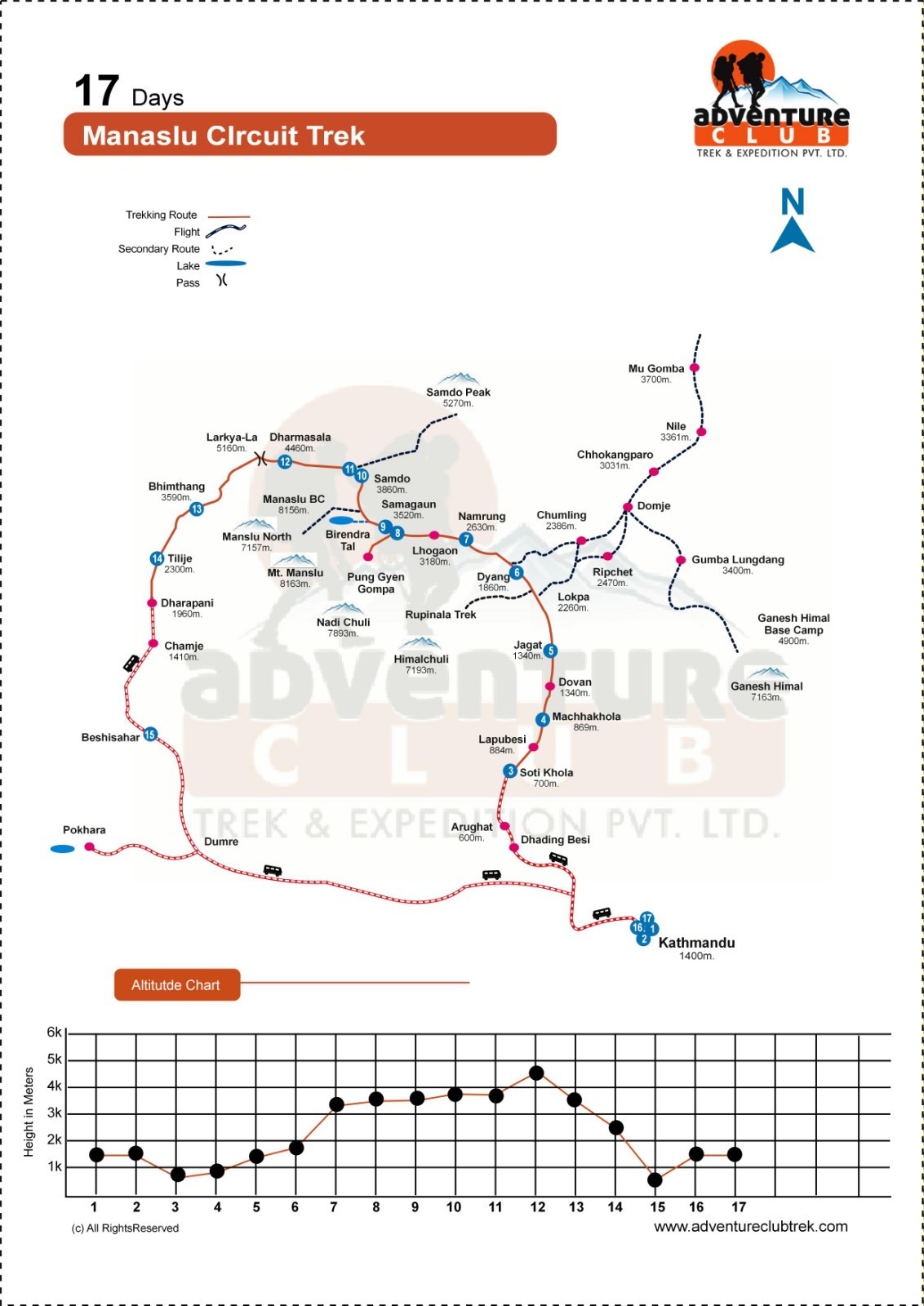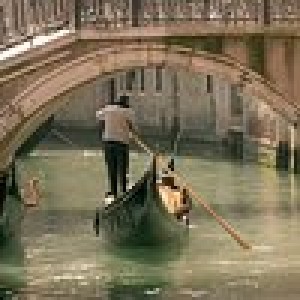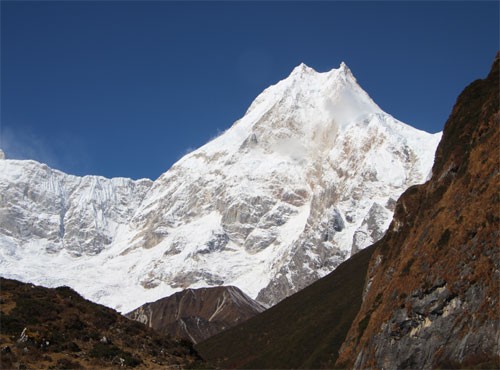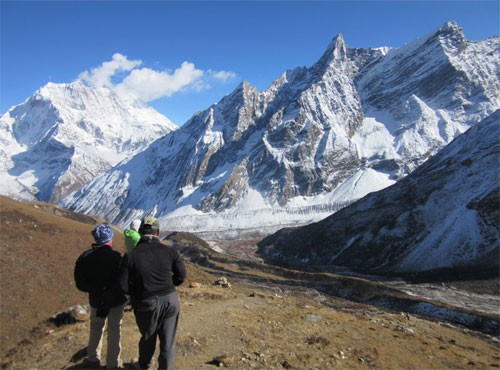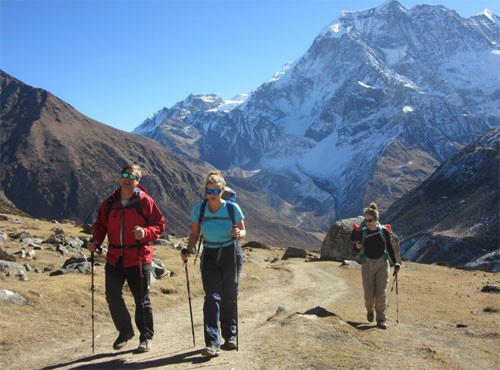Manaslu Circuit Trek-17 Highlights:
- Explore the Kathmandu Valley and scenic drive to Soti Khola
- Trek through Budi Gandaki River valley and sub-tropical woods
- Visit ethnic Gurung and Tibetan Buddhist-populated villages
- Enjoy stunning views of Ganesh Himal, Sringi Himal & Lamjung Himalayas
- Experience a mixture of Nepalese and Tibetan culture
- Walk between the borders of Nepal and Tibet
- Cross the challenging Larkya La Pass over 5,215 m
- Visit alpine settlements like Sama Gaon and Samdo
- Discover ancient monasteries such as Ribung Gompa and Taka Choeling Gompa
Manaslu Circuit Trek-17 days Package Price 2025 and 2026
The Manaslu Trek offers an off-the-beaten-path experience along a quieter, less crowded trail. Trek through the picturesque Budi Gandaki and Nubri Valleys, immersing yourself in unique mountain cultures on the verge of extinction. Explore ancient Buddhist monasteries and gain insight into Bon, a Tibetan religion predating Buddhism. Also known as the Manaslu Circuit, this trek takes you to some of the most remote and rarely visited parts of the Nepalese Himalayas. With fewer trekkers compared to the popular Everest and Annapurna trails, the journey begins in the lush Budi Gandaki Valley and ascends into the high Nubri Valley.
Manaslu Circuit Trek begins with a UNESCO World Heritage Sites tour and then trekking through the stunning Manaslu Region. We are awed by the spectacular views of Mt. Manaslu (8164m), the eighth-highest mountain in the World, it is the perfect place to see the rich heritage of the local people and its biological diversity.
This trek's highest point is the "Larkya La Pass," widely considered to be the most dramatic pass crossing the Himalayas. This trek, like all Adventure Club Trek itineraries, allows for adequate acclimatization. The trek is largely a walking trip on mountain trails and can be done by people in good cardiovascular shape. It is important to remember that walking at lower elevations is easier on the body. It is said that the 'Manaslu Circuit Trek,' with its remoteness, solitude, and solidarity, is a stark contrast to trekking around Annapurna. This makes it a great choice for those who want to get closer to nature.
Manaslu circuit trekking is a Himalayan adventure that has been open since 1991. It's a great way to get off the beaten track! This itinerary is perfect for those seeking a pristine wilderness experience and authentic culture. It was designed to be manageable by moderately fit hikers and avoid altitude-related health issues. Discover spectacular mountain views and virgin terrains when you travel along the Nepal/Tibet Border.Manaslu is a restricted route that only allows groups with permits to trek the incredible paths and passes.
The trek starts at Soti Khola and passes through many beautiful villages in the Manaslu Region before ending at Besisahar. You will need a special trekking permit to enter the region. After passing through Arughat village, we continue to drive to Soti Khola, where we start our trek towards Machhakhola. From there, we can reach Jagat, Deng Lho, Samagaun Samdo, and Dharamsala. We descend to Bimtang after reaching the trek's highest point, Larke La Pass (5106m). Then, we drive to Besisahar and return to Kathmandu.
Who Can Join This Trek?
The Manaslu Circuit Trek is designed for moderately fit individuals with good cardiovascular endurance. While it involves long trekking days, proper acclimatization is factored into the itinerary to minimize altitude-related risks. Whether you're a seasoned trekker or an adventure enthusiast, this trek provides a rewarding challenge with unparalleled natural beauty and cultural richness.
Why Choose Adventure Club Trek?
With over 18 years of expertise in Himalayan trekking, Adventure Club Trek ensures a safe, well-organized, and enriching trekking experience. We handle all logistical details, including permits, transportation, and accommodation, while prioritizing your safety and comfort.
📌 Trip Customization: We offer flexible itineraries ranging from 12 to 17 days to suit your preferences.
📌 Best Seasons: Spring (March-May) and Autumn (September-November) offer the most favorable trekking conditions.
The 17-Day Manaslu Circuit Trek itinerary includes private transportation, such as Jeeps or vans, from Kathmandu to Kathmandu to ensure a comfortable and timely journey. However, if you're looking for a budget-friendly option, we can Customize the itinerary to include public transportation, such as local buses or public Jeeps, which will help reduce the cost slightly. Please feel free to contact us, and we will be happy to tailor the itinerary to suit your preferences and needs.
How difficult is the Manaslu Circuit Trek?
The Manaslu Circuit Trek is a 110mi (177 km) route that takes 12-13 days to complete on a 16-17 day itinerary. It covers an average of 9-12 mi (15-20 km) each day, with the first few days involving challenging hikes due to the steep Budi Gandaki Gorge and uphills/downhills. At 5,106m (16,752 ft), the Larkya La Pass is the most challenging part, with long hikes on snow-covered trails. Altitude-related sickness is a significant challenge due to the variations in elevation. No specific mountaineering or hanging skills are required, but physical fitness is crucial—especially if it's your first time. We recommend strength and endurance training, cardio fitness, jogging, and running for at least three to four weeks before starting the trek.
What is the best season to do the Manaslu Circular Trek?
The best time to do the Theaslu trek is during the pre-monsoon season from March to May and the post-monsoon season from late September to December when the weather is optimal and enjoyable. The ideal months for this trek are October, November, April, and May; September, December, and March are also recommended. However, doing this trek during the remaining months is not recommended. Heavy snowfall in January and February makes it risky to cross the Larkya La Pass, while heavy rainfall during June, July, and August can cause floods and landslides, making it better to avoid these months.
What kind of accommodation can I expect on the Manaslu Trek?
Accommodation on the Manaslu Trek includes clean huts and teahouses. Some places have upgraded guesthouses. The guesthouses have room heaters, en suite toilets and bathrooms, and a heated floor. The lodge owners add new facilities every year to improve the comfort of their guests. We will book the best lodges and guesthouses along the route for the duration of your trek when you book with Adventure Club Trek.
Is there Cell phone reception on the Manaslu Circuit Trek?
Cell phone reception is available on the Manaslu Circut Trek but can be unreliable and unpredictable in some areas. The reception is good in the lower part of the trek near villages and towns. However, it can be limited or nonexistent at higher altitudes. Some teahouses and lodgings offer WIFI for a small fee. However, the quality and speed of the connection can vary. Bring a power bank and extra batteries to stay connected if your battery runs out or there is a power cut. It would help to rely on something other than your cell phone for navigation or communication during your trek. Carry a map, a compass, and a guidebook, or hire an experienced local guide to help you navigate the trail.
Trekking Permits for Manaslu Circuit Trek
The government of Nepal has decided to limit tourism in the Manaslu Region, which is the area between Jagat and Dharapani. This means that people who want to trek there alone can't do so. Instead, they need to get a special permit. Also, if you want to trek in this region, you have to be in a group of at least two people with a local guide. You can't just go with any guide; it has to be someone from a registered agency. You'll need three different permits for the Manaslu trek and an extra one if you plan to visit Tsum Valley as well.
Special Restricted Area Permit for Manaslu (Manaslu RAP
The Cost of the Trekking permits
From September to November: USD 100 per person in the first seven nights and USD 15 extra per person each day after the eighth night.
From December to August: USD 75 per person for the initial seven days and USD 10 extra per person each day after the eighth.
Manaslu Conservation Area Project (MCAP Permit)
This permit is required from Philm, where the Manaslu Conservation Area starts. The price is USD30 year-round for any days you spend inside the conservation area.
Annapurna Conservation Area Project (ACAP Permit)
You will need this permit from Dharapani to exit ACAP at Beshi Sahar. The Cost of any day spent in the ACAP conservation zone is USD30.
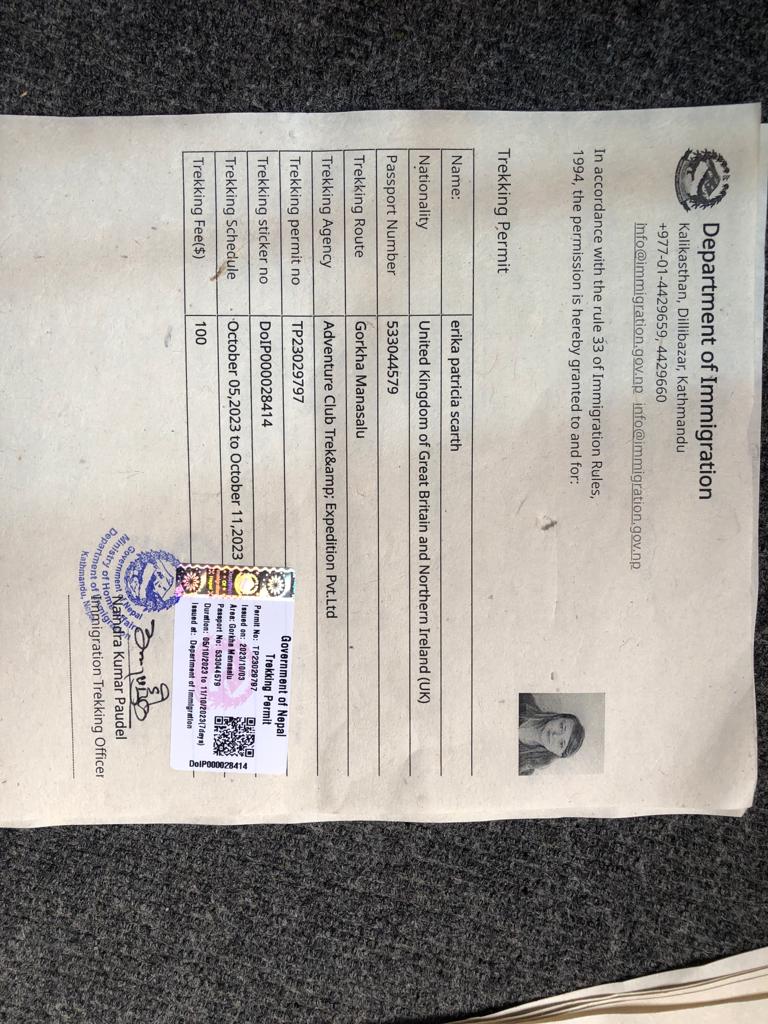
How Is Drinking Water On Manaslu Circuit Trek?
Drinking water is readily available from rivers, streams, and springs along the Manaslu Circular Trek. Treating water before consumption is crucial to preventing waterborne illnesses like cholera and typhoid. You may purify water by boiling it for 15 minutes, using tablets or drops of water purification, or carrying a filtration system. Bring a refillable bottle or hydration pack to reduce plastic waste and environmental footprint. Some teahouses and lodges offer bottled water at higher elevations, but the Cost can be steep. Hydration is essential to prevent altitude sickness and maintain good health during the trek.
What are the meals on the Manaslu Circuit trek like?
Manaslu Trekking will serve all meals on a full-board basis, whereas in Kathmandu, only breakfast is served. Three meals are served daily during trekking from menus of tea houses, lodges, or local homes. We eat breakfast and dinner daily in the exact location where we spend the night. Lunch will be served in a teahouse on the way to our destination. The Manaslu area has a different level of tourist infrastructure than exists in the Annapurna and Everest regions (and this is what makes this region so attractive). There will be no variety of food available. Tibetan bread, dal bhat, and tsampa are the leading local foods. Adventure Club Trek recommends that we are prepared for a small adventure.
What is the electricity and wifi like on Manaslu Trek?
All teahouses on the Manaslu Circular Trek have Electricity. You can charge electronic devices using solar panels or hydroelectricity in the community for a small cost. Bring extra batteries or rechargeable energy banks as a backup. The wifi coverage is minimal, and the cell phone coverage could be better. Therefore, bringing a laptop along is not recommended. Some lodges offer a paid wifi service but may need more speed and connectivity.

